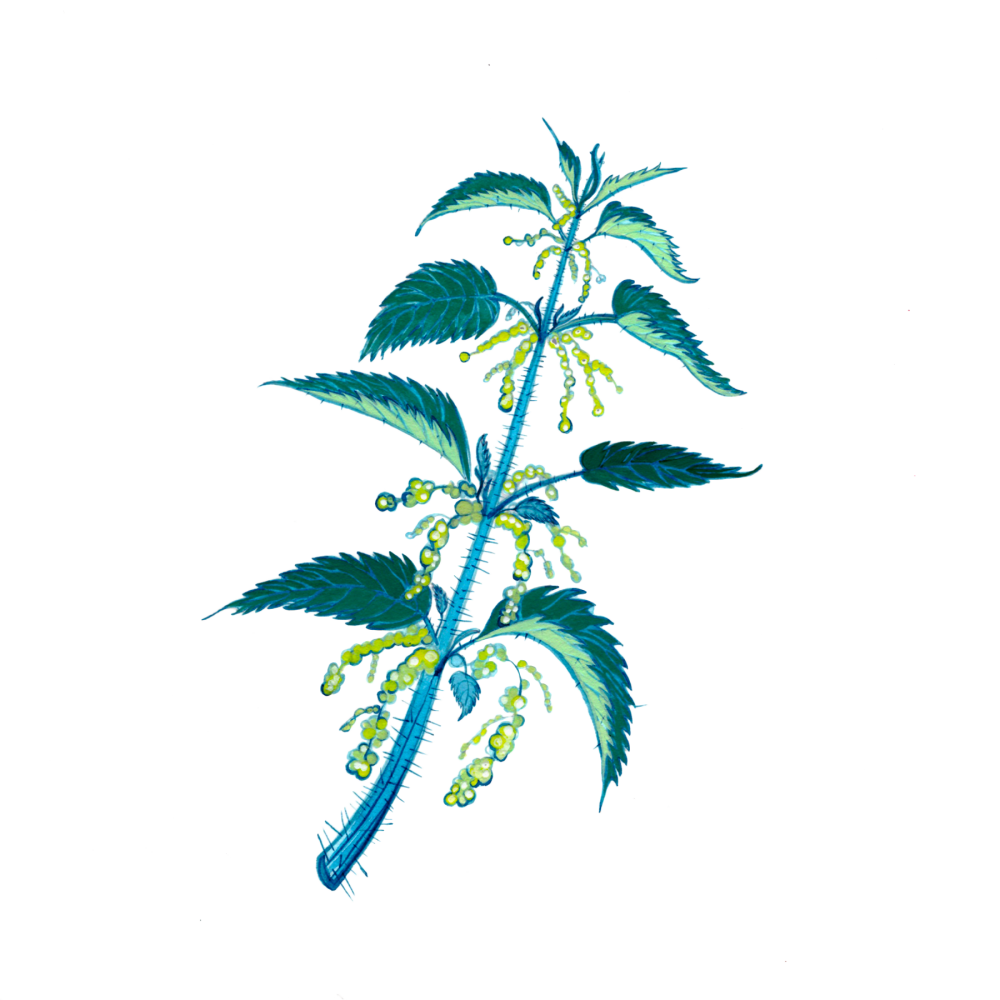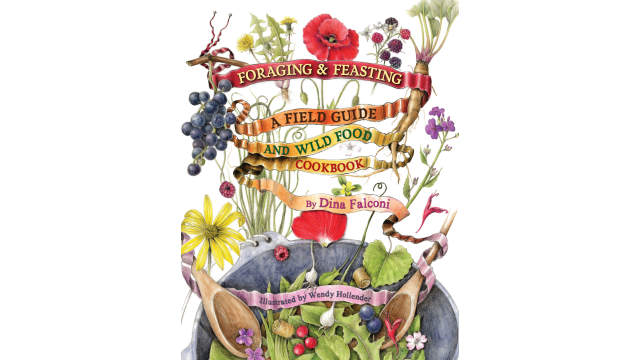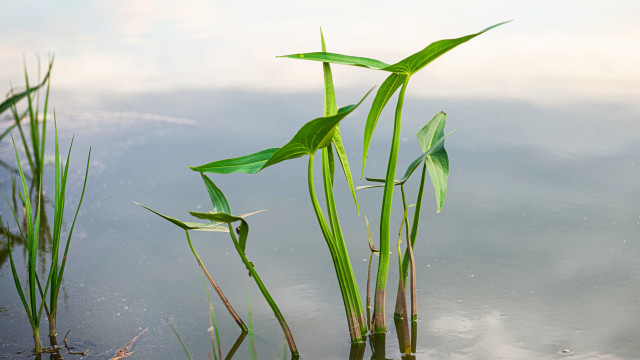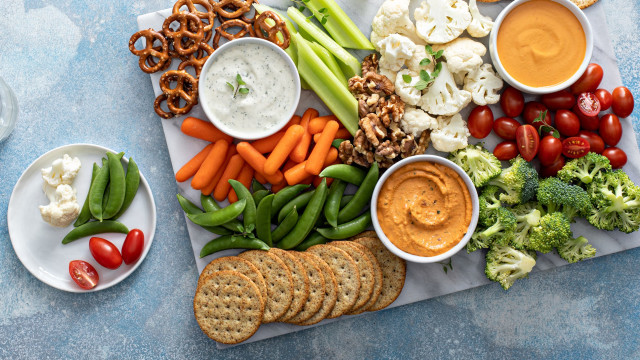Nettle

Latin name: Urtica dioica
Uses: vegetable, tea, textile, dye
What are nettles?
Stinging nettles are perennial plants covered in tiny spines that act like hypodermic needles when touched, injecting histamine and formic acid into your skin, causing pain and sometimes an itchy rash. But a quick blanching in boiling water destroys the tiny spines, rendering the leaves not just edible but transforming them into a silky, velvety delicacy. Nettles have also been used for their fibers, which are similar to linen, for thousands of years, and their leaves and roots can be used to obtain green and yellow dyes for textiles.
Why are nettles healthy?
While nettles can irritate your skin, if handled properly they’re nutritional powerhouses. The leaves are rich sources of terpenoids, carotenoids, fatty acids, essential amino acids, chlorophyll, polyphenols, and minerals. Besides vitamins C, B2, E, and K1, nettle leaves are high in protein and contain important fatty acids, including alpha-linolenic. They contain iron, calcium, beta-carotene, and magnesium and are high in antioxidants. Some people drink nettle tea to treat respiratory conditions, urinary tract infections or prostate issues, and to dissolve kidney stones. Pregnant women and people on some medications should avoid nettles because of possible adverse effects.
What do nettles taste like?
Nettles taste the way they look — dark green and a little feral, with a mineral intensity and swampy depth that almost resembles spirulina. If you like dark green, leafy vegetables, then you’re in luck. Cooked nettles resemble spinach, with a little bitter cucumber flavor, and can be used anywhere you might find spinach. They’re best in the early spring; once they start to flower, they should not be eaten.
How do I use nettles?
Nettles are hugely popular in Italy, where they’re frequently added to gnocchi or pasta, adding color, flavor, and nutrition to all manner of spring preparations. Because they get so soft and delicate when cooked, they’re ideal for making purées and soups, where they work well with other herbs, greens, and vegetables. Dried nettles can be made into tea, either alone or in combination with other medicinal herbs. Try using nettle purée in smoothies, much as you would spirulina, balancing that dark green intensity with other fruit and vegetables.
What do nettles pair well with?
They pair well with dairy, as in soup enriched with milk, creamed spinach, or gratin-type applications, and hard cheese like pecorino frequently accompanies their various pasta manifestations.
Where do nettles grow?
Nettles are native to Eurasia, Western North Africa, and North America, but now grow around the world. Because they like moist, fertile soil, especially areas that have recently been disturbed, they’re good indicators of soil fertility. In the regions where they grow, nettles are one of spring’s first edible plants, making them a nutritious treat for foragers after a long winter with no wild greens.
How to buy nettles:
You'll have trouble finding them in stores, since they're wild plants and not fun to touch until they're cooked. They're best foraged in the spring, before they flower; bring gloves and scissors and you'll be well equipped.
Fun nettle fact:
Roman soldiers in Britain supposedly rubbed their skin with nettles to help fend off the clammy northern cold, because the irritation — which does feel hot — can help reduce existing pain. Some people today believe that intentionally irritating one’s hands with nettles can relieve arthritis.







